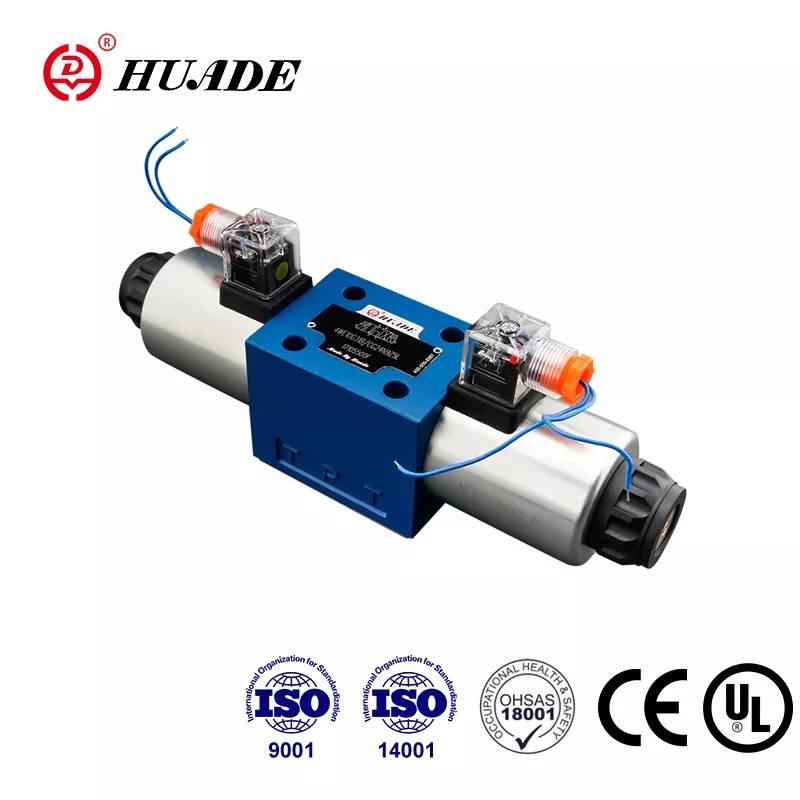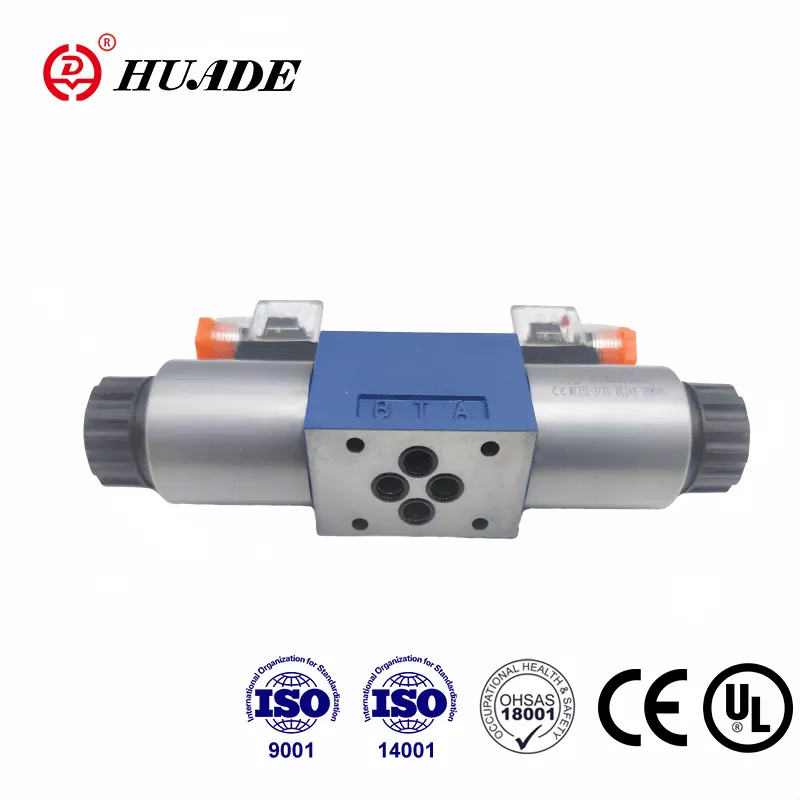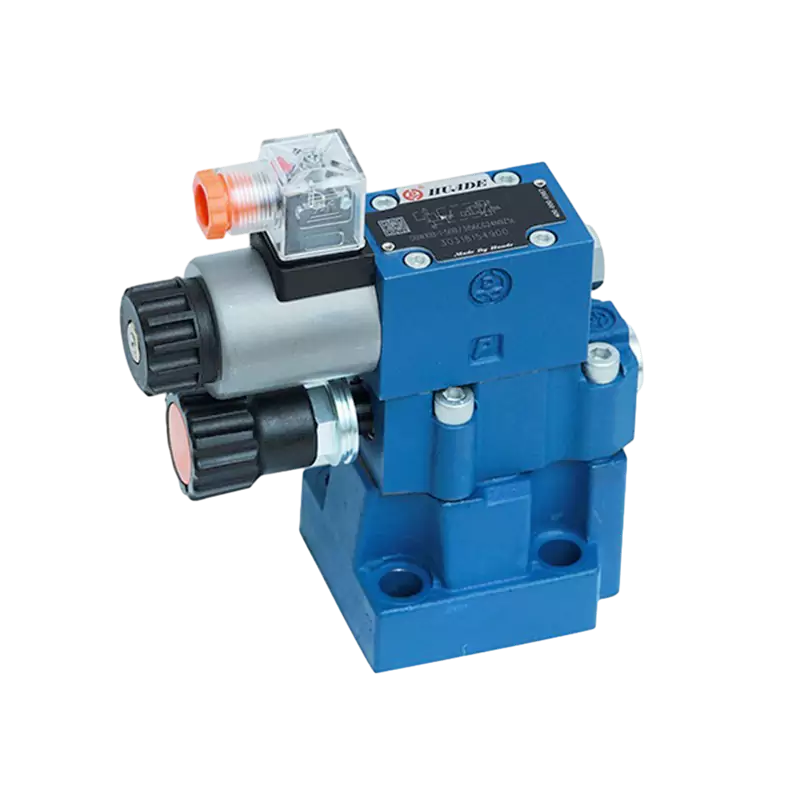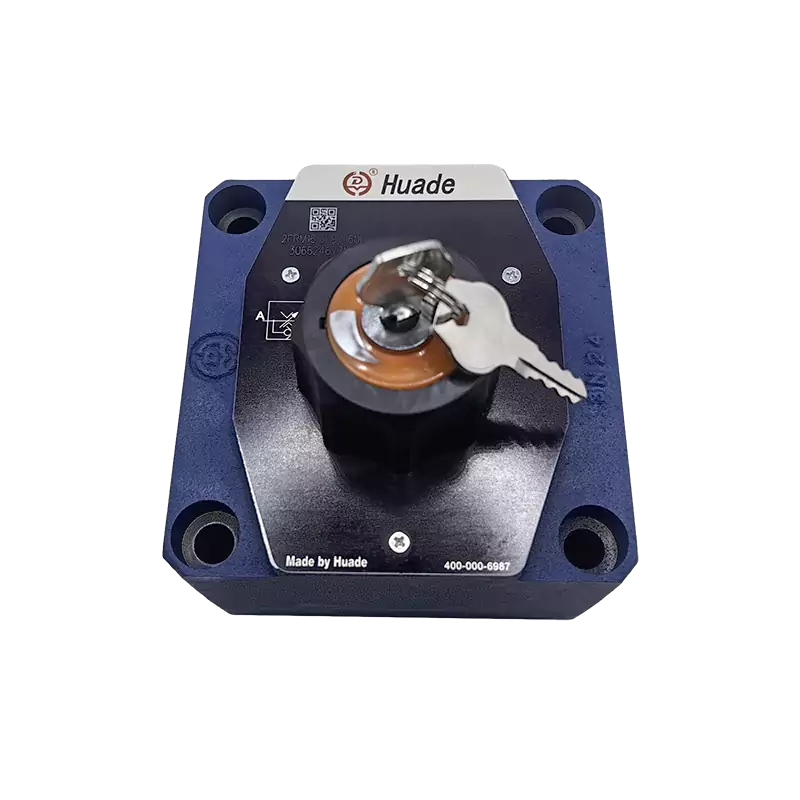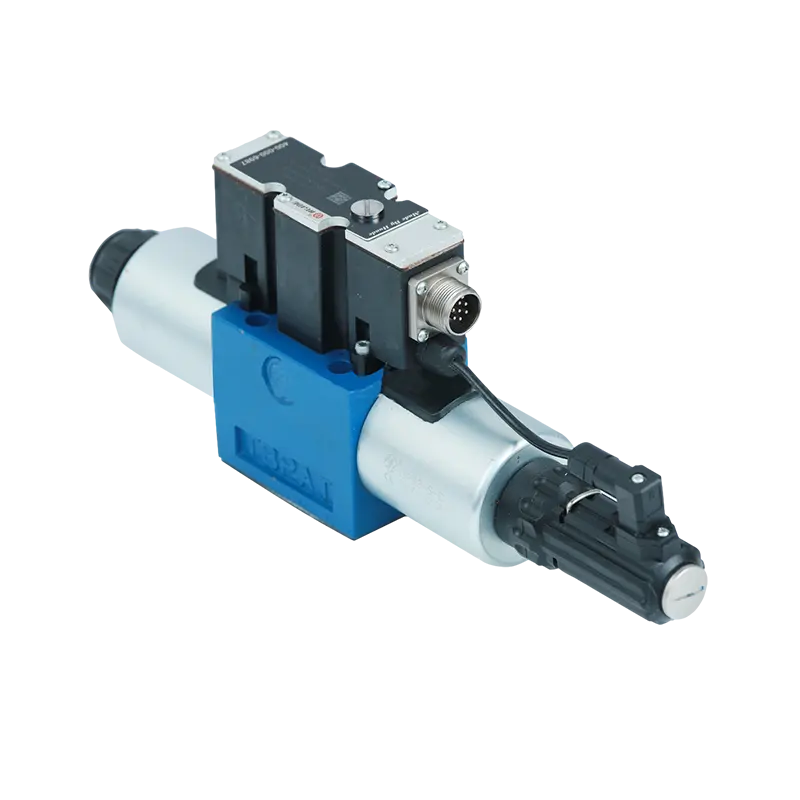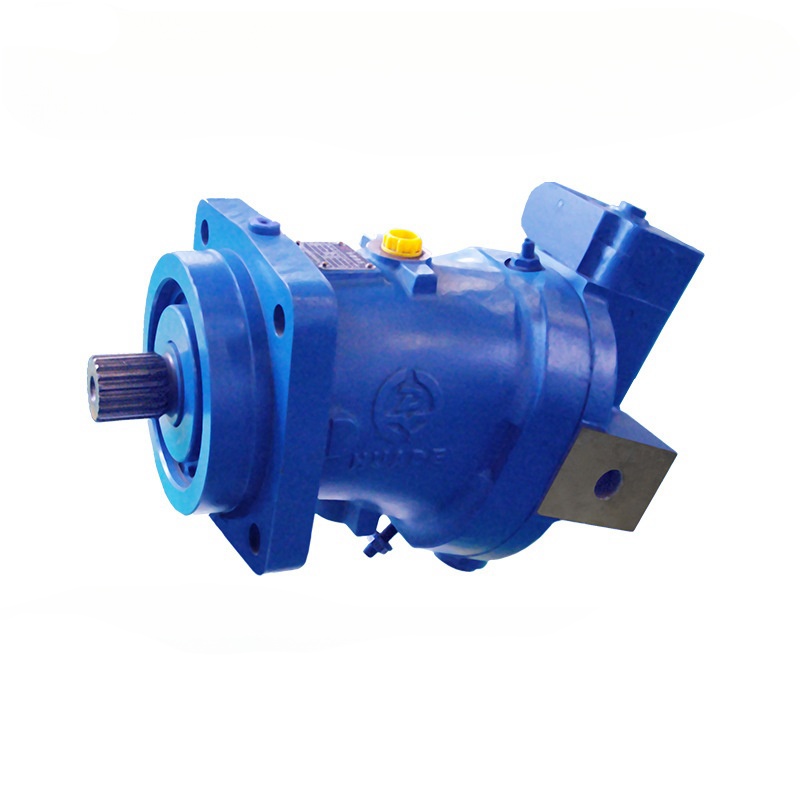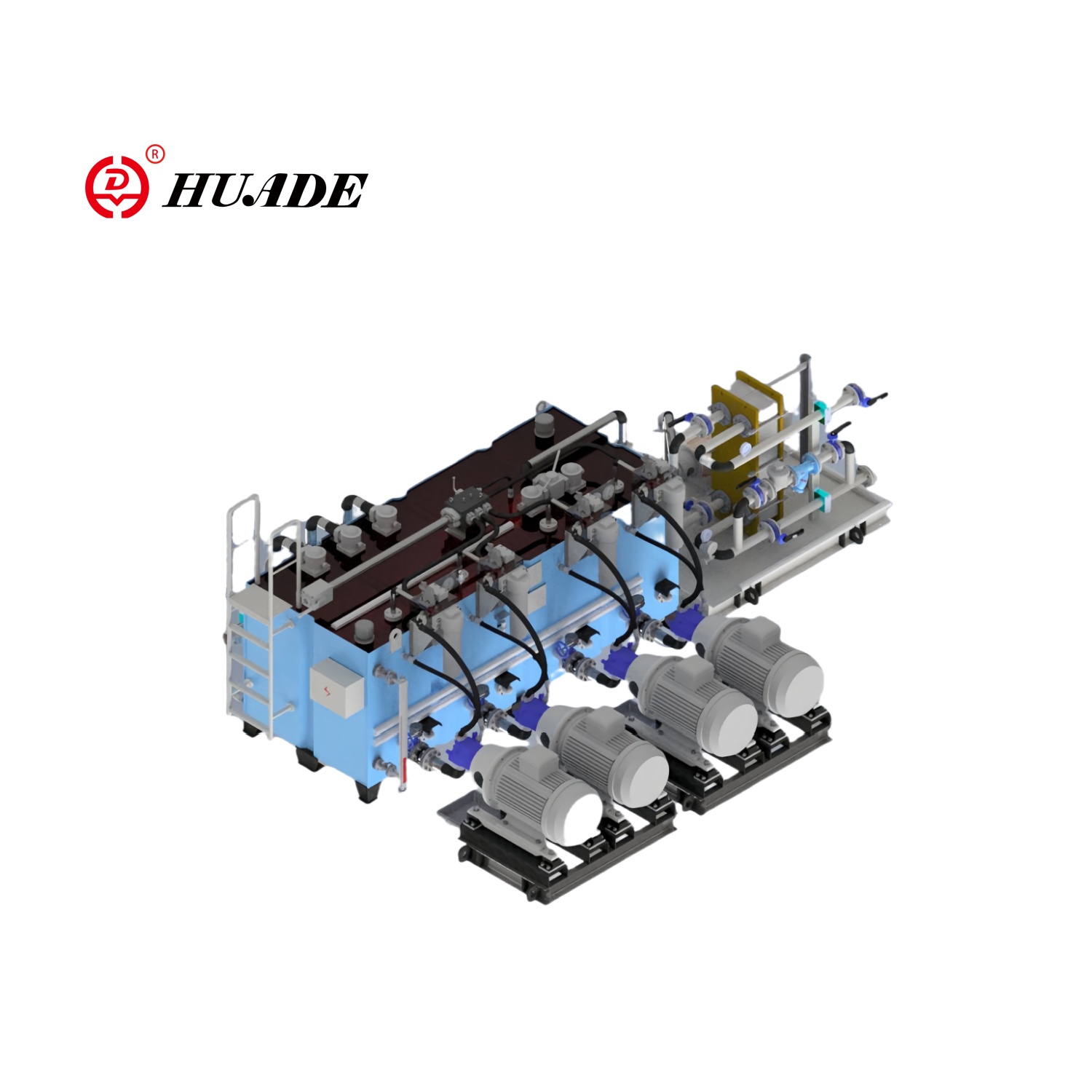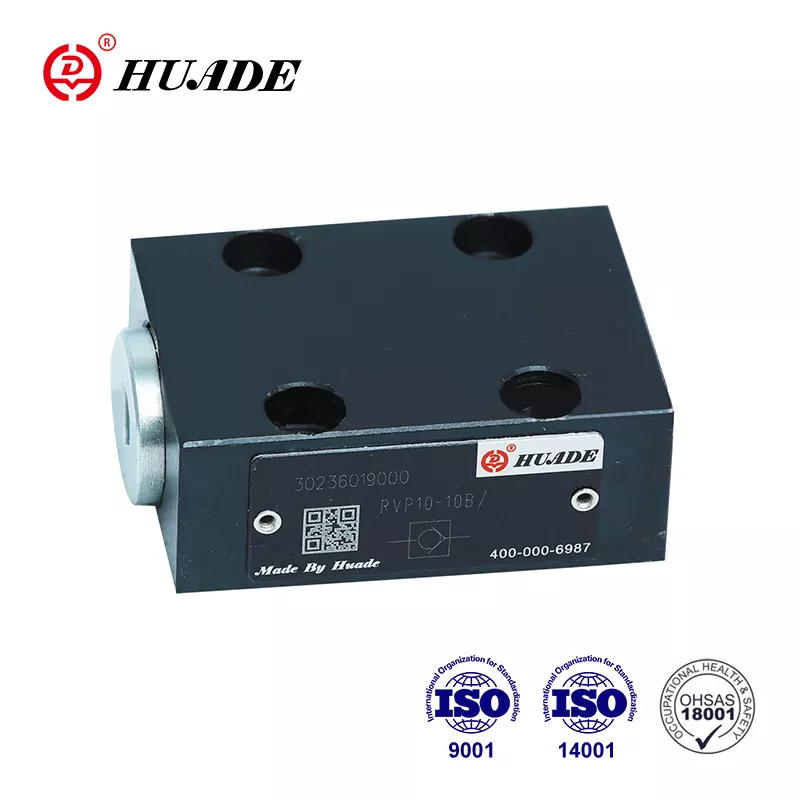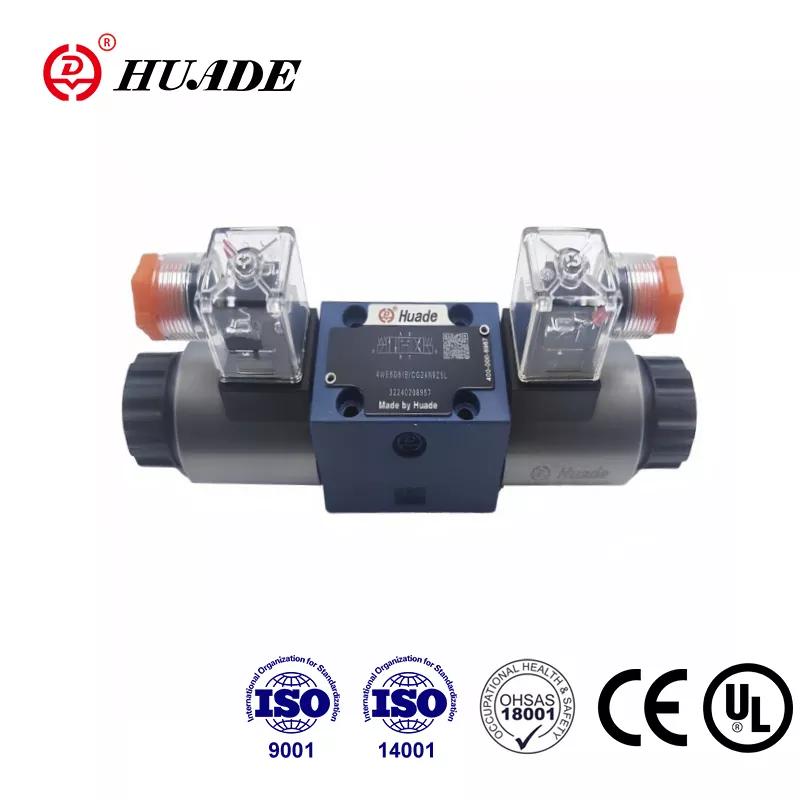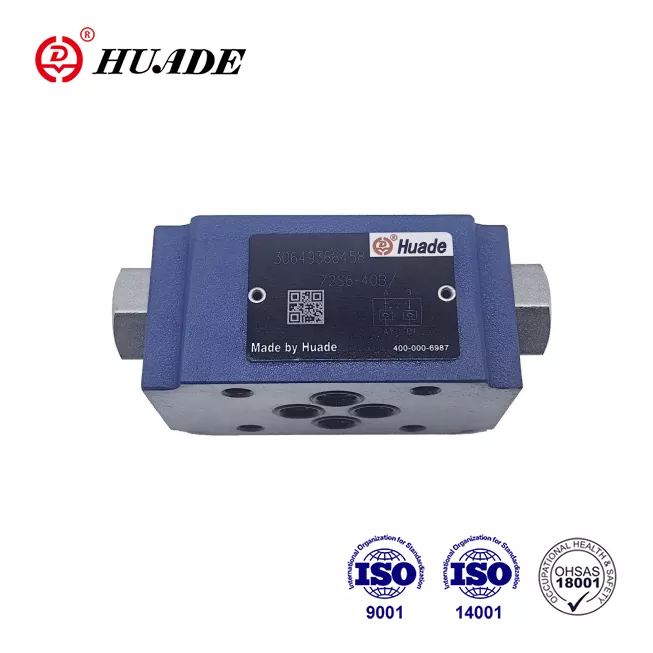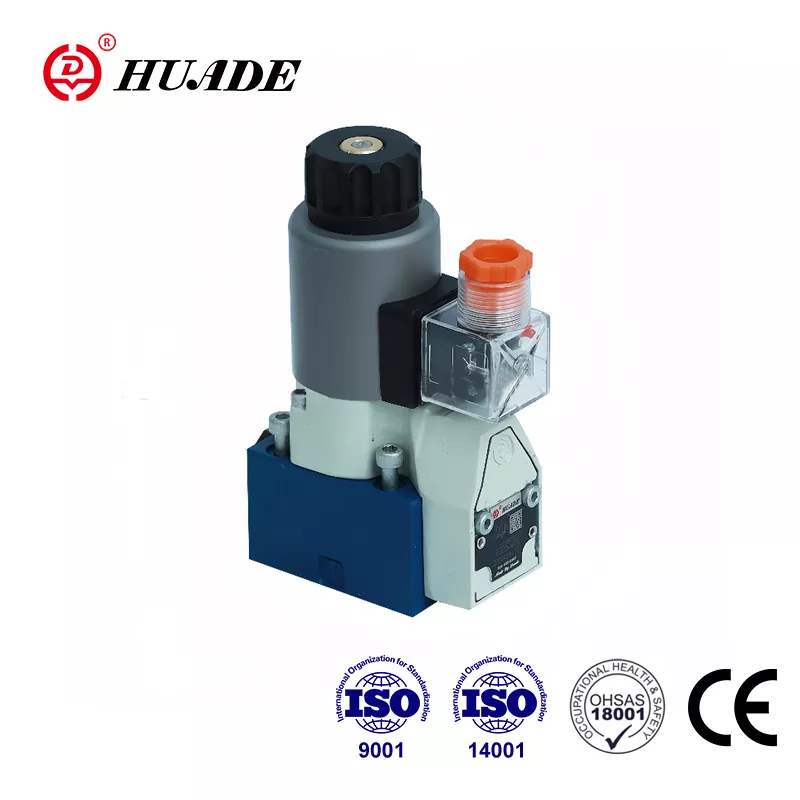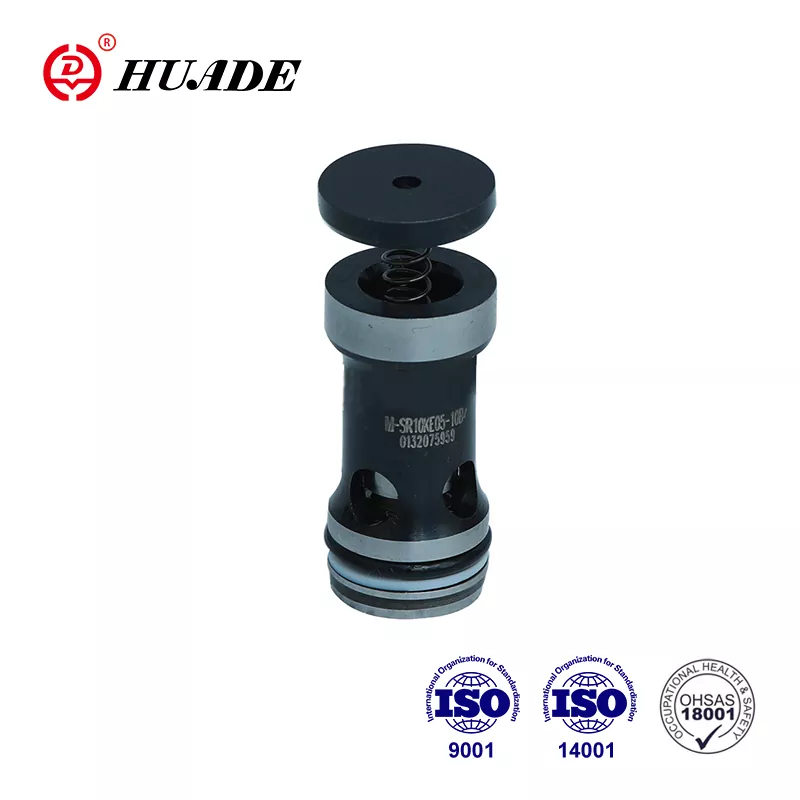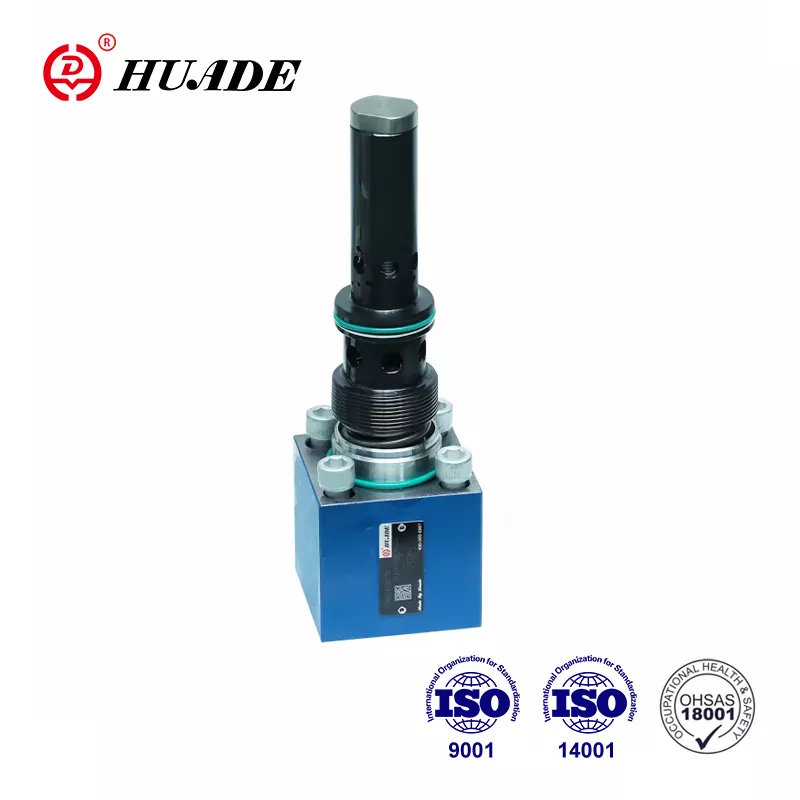When you're working with hydraulic systems, you need components that just work—day after day, shift after shift. The 4WE10 directional control valve has earned its reputation in factories worldwide for exactly that reason. This directional control valve isn't the fanciest technology out there, but the 4WE10 handles the essential job of controlling hydraulic fluid flow with remarkable consistency.
The 4WE10 valve operates on a straightforward principle. An electromagnetic coil pushes a spool inside the valve body, which opens and closes pathways for hydraulic oil. When you energize the coil, the spool moves. When you cut power, a spring returns it to its original position. The 4WE10's design is direct-acting, meaning there's no pilot stage or complex mechanism between the electrical signal and the mechanical movement.
Understanding the 4WE10's NG10 Standard
The 4WE10 directional control valve follows what's called the NG10 mounting standard, also known as CETOP 5 or ISO 4401-05. This standardization matters more than you might think for directional control valves. It means you can swap out a 4WE10 from one manufacturer with an equivalent directional control valve from another without redesigning your mounting plate or replumbing your system. For maintenance teams and equipment designers, this interchangeability of the 4WE10 reduces headaches and costs.
The 4WE10 valve connects through four main ports: P for pressure inlet, A and B for the two work ports that connect to your actuators, and T for the return line back to the tank. This four-way configuration gives the 4WE10 control over bidirectional movement, which is why you'll find these directional control valves controlling cylinders that need to extend and retract.
Technical Capabilities of the 4WE10 Directional Control Valve
The 4WE10 handles pressure up to 315-350 bar depending on the specific model, which translates to about 4,569 PSI. That's enough for most industrial machinery without venturing into extreme heavy-duty territory. The 4WE10's nominal flow rate sits at 120 liters per minute, though this directional control valve can push to 160 liters per minute when needed. For reference, 120 liters per minute equals roughly 31.7 gallons per minute.
These numbers define where the 4WE10 valve fits in your system. If you're running higher flows consistently through your directional control valve, you'll start seeing pressure drops that generate heat and waste energy. The relationship between flow and pressure drop in the 4WE10 isn't linear—it follows a square law, meaning doubling your flow rate quadruples your pressure loss. At the nominal 120 liters per minute, your 4WE10 directional control valve will show around 12 bar of pressure drop, which represents energy that turns into heat rather than useful work.
4WE10 Spool Types and Their Applications
The 4WE10 valve comes in different spool configurations, identified by letters like D, E, G, and H. Each letter defines what happens to the fluid paths when the directional control valve sits in its center position, and choosing the right 4WE10 configuration matters for how your machine behaves.
The 4WE10 H-spool blocks all ports in the center position. This creates a hydraulic lock that holds your cylinder exactly where it is, even under load. You'd use this 4WE10 configuration when positioning accuracy matters, like holding a clamp closed while a welding operation happens. The downside is that any thermal expansion of trapped oil can spike pressure in your directional control valve, so you need to account for that in your design.
The 4WE10 G-spool connects the pressure port directly to the tank in the center position. This directional control valve configuration unloads your pump, dropping system pressure to nearly zero while the 4WE10 sits idle. It's common in press applications where the machine waits between cycles. Your pump runs, but it's not fighting against high pressure through the 4WE10 valve, which saves energy and reduces heat.
The 4WE10 E-spool blocks the pressure port but connects the work ports to the tank. This lets trapped pressure bleed off from your actuators while preventing new flow from the pump through the directional control valve. It's useful when you need to release residual pressure before the next cycle starts on your 4WE10 system.
Different applications need different behaviors, and the standardized letter codes make it easier to specify exactly which 4WE10 directional control valve you need without lengthy technical descriptions.
Installing Your 4WE10 Directional Control Valve
Mounting the 4WE10 is straightforward, but you need to pay attention to a few details. The directional control valve can mount in any orientation, though you should consider where the electrical connections on your 4WE10 end up for ease of maintenance. The coils are removable and can rotate 360 degrees around their axis, which helps when you're dealing with tight spaces on your 4WE10 installation.
One often-overlooked detail with the 4WE10 valve is the return line pressure. While the main ports handle 350 bar, the tank port on your directional control valve should stay below 160 bar. If you're running multiple 4WE10 units that share a common return line, pressure spikes from one directional control valve can affect others. The backpressure might even cause unwanted spool movement in your 4WE10. Using individual check valves on each 4WE10 return line or ensuring adequate line sizing prevents this issue.
The 4WE10 directional control valve includes provisions for manual override, which lets you operate it by hand during commissioning or troubleshooting. This feature on the 4WE10 has a pressure limit of 50 bar on the tank port. It's not designed as a safety function or for regular operation of your directional control valve, just as a maintenance aid.
4WE10 Electrical Specifications
Most 4WE10 directional control valves run on 24V DC, though you'll find 4WE10 versions for 12V, 48V, 110V AC, and 220V AC depending on your facility's standards. The 4WE10 coil connects through a DIN EN 175301-803 electrical connector, which has become something of an industry standard for industrial directional control valves. Many 4WE10 versions include an LED indicator that lights up when the coil is energized, giving you quick visual confirmation without needing a multimeter.
The 4WE10's coil design uses wet-pin construction, meaning it sits in direct contact with the hydraulic oil flowing through the directional control valve. This oil contact in the 4WE10 does several useful things. It cools the coil, preventing thermal overload in your directional control valve. It dampens mechanical vibration and noise, keeping 4WE10 operation quiet. And it provides lubrication that extends coil life on your directional control valve. The downside is that if you have a coil failure on your 4WE10, you need to drain or isolate that section of the system before replacement, though the removable design makes this process relatively quick for the directional control valve.
Fluid Requirements for the 4WE10 Valve
The 4WE10 directional control valve expects mineral-based hydraulic oil with a viscosity around 37 mm²/s at 55°C. The 4WE10 tolerates a wide range from 2.8 to 380 mm²/s, but operating at the extremes affects performance in your directional control valve. Very thin oil increases internal leakage in the 4WE10, while thick oil slows response time and increases pressure drop through the directional control valve.
Contamination control matters significantly for 4WE10 valve life. The recommendation for directional control valves is ISO 4406 cleanliness of 20/18/15 or better, with filtration at 10-16 microns. That might sound overly precise, but the clearances between the spool and bore in your 4WE10 measure in the range of 5-25 microns depending on the directional control valve design. Particles in that size range act like sandpaper, wearing the precision surfaces in your 4WE10 that seal each port from the others.
Hard particles create scratches that increase leakage over time in your 4WE10 directional control valve. Soft contaminants and water can promote corrosion or form sludge deposits. Either way, your 4WE10 valve performance degrades. In really dirty systems, you might see sticking where the 4WE10 spool refuses to move smoothly or returns sluggishly to center position in the directional control valve.
4WE10 Pressure Drop and System Efficiency
Understanding pressure drop helps you design more efficient systems with the 4WE10 valve. At 60 liters per minute, your directional control valve drops about 3 bar. At 100 liters per minute, that jumps to 8 bar through the 4WE10. At the maximum 120 liters per minute, you're losing 12 bar across the directional control valve.
Each bar of pressure drop at a given flow rate represents power converted to heat in your 4WE10. The formula is straightforward: power loss equals flow rate times pressure drop. At 100 liters per minute with 8 bar drop through your directional control valve, that's about 1.3 kilowatts of heat. Your system needs to dissipate that heat generated by the 4WE10, either through a cooler or by accepting higher oil temperatures.
For systems where efficiency matters, keeping flow rates below 80 liters per minute through the 4WE10 directional control valve gives you a better balance between valve size and heat generation. If you need higher flows than the 4WE10 can efficiently handle, consider the next size up or using multiple directional control valves in parallel.
4WE10 Switching Time and Response
The 4WE10 valve typically switches in 70-120 milliseconds, which is fast enough for most industrial applications but not instantaneous. Internal damping features in the directional control valve smooth out the transition, preventing hydraulic shock that could damage components or create noise. You'll find small orifices and chambers designed into the 4WE10 spool that meter oil flow during the switching event.
Some 4WE10 directional control valve models include external adjustment screws that let you tune the switching speed. This becomes useful when multiple 4WE10 units share common lines, allowing you to stagger their switching times to avoid pressure transients in your directional control valve system.
Common Applications for the 4WE10 Directional Control Valve
You'll find 4WE10 valves throughout industrial settings. Machine tool applications use the 4WE10 directional control valve for work clamping, where a cylinder needs to extend forcefully and hold position while cutting happens. Injection molding machines use the 4WE10 to control valve pins that regulate plastic flow. Automated assembly lines use these directional control valves in pick-and-place robots for discrete positioning moves.
The 4WE10 excels at discrete control—move to position A, stop, move to position B, stop. This directional control valve doesn't handle proportional control well because it's either open or closed with nothing in between. If you need variable speed control or precise flow regulation beyond what the 4WE10 offers, you'd step up to a proportional directional control valve in the 4WRPE series instead.
Maintaining Your 4WE10 Valve
The 4WE10's removable coil design simplifies maintenance for this directional control valve. When a coil fails on your 4WE10, you can replace it without opening the hydraulic system. Disconnect the electrical plug, unscrew the retaining nut, pull out the old coil, and install the new one on your directional control valve. The 4WE10 coil can rotate during installation, so you can position the electrical connector wherever it's most convenient.
Internal spool wear in the 4WE10 directional control valve eventually causes increased leakage and sluggish response. You might notice that a cylinder drifts slowly when it should hold position, or switching time increases on your 4WE10. At that point, you're looking at either rebuilding the directional control valve with new seals and possibly a new spool, or replacing your 4WE10 entirely. The economic calculation depends on your labor costs versus the valve price.
Contamination-related sticking in the 4WE10 shows up as intermittent operation or complete failure to shift. Sometimes you can recover function in your directional control valve by flushing the system and replacing filters, but if scoring has occurred on the 4WE10 spool or bore, you need replacement parts for the directional control valve.
Sourcing Your 4WE10 Directional Control Valve
Bosch Rexroth originated the 4WE10 design and offers the widest variety of directional control valves with 53 different spool configurations. Their 4WE10 valves serve as the reference standard for directional control valves. Hydac, Parker, Eaton Vickers, and Argo Hytos all manufacture compatible 4WE10 versions that mount on the same interface. Chinese manufacturers like CML and Huade produce cost-competitive 4WE10 alternatives that maintain the mounting standard for directional control valves.
Pricing for the 4WE10 directional control valve ranges from about $18 to $38 per unit depending on quantity, specifications, and supplier. Minimum order quantities for 4WE10 units vary from single pieces to 50 or more, with larger orders bringing lower unit prices. Lead times typically run 10-15 days for standard 4WE10 configurations.
The standardization means you can source 4WE10 directional control valves from multiple suppliers and maintain interchangeability. For critical applications, you might stock 4WE10 valves from two different manufacturers to ensure you're never dependent on a single supply chain for your directional control valves.
Limitations of the 4WE10 and When to Consider Alternatives
The 4WE10 directional control valve handles its designed role well but has clear limitations. The binary nature of the 4WE10's control means this directional control valve isn't suitable for applications needing variable speed or soft starts. The pressure drops at high flow make the 4WE10 inefficient for continuous high-flow operations. The internal leakage inherent in the 4WE10 spool design means this directional control valve won't hold pressure indefinitely in closed-center configurations.
If you need proportional control beyond what the 4WE10 offers, look at directional control valves with integrated electronics and proportional solenoids. If you need very low leakage, consider poppet-style valves instead of the 4WE10. If you're working with flows significantly above 120 liters per minute, the next size up (NG16 or NG25) makes more sense than the 4WE10 directional control valve.
The 4WE10 technology is mature, which means you won't see dramatic improvements in basic 4WE10 performance. Innovation in hydraulics has moved toward proportional and smart directional control valves with integrated diagnostics. The 4WE10 remains relevant for applications where its capabilities match the requirements and where proven, standardized directional control valve technology outweighs the benefits of newer approaches.
Selecting the Right 4WE10 Configuration
Choosing a 4WE10 directional control valve requires matching your system parameters to the valve's capabilities. Calculate your required flow rate and ensure it stays below 80-100 liters per minute for efficiency with the 4WE10. Verify that your pressure stays within the 315-350 bar limit with adequate safety margin for your directional control valve. Choose the 4WE10 spool type that provides the centering behavior your application needs.
Consider the electrical supply available at your installation site and specify the appropriate 4WE10 coil voltage for your directional control valve. Think through the maintenance access—can someone reach the electrical connector and coil on your 4WE10 when service is needed? Plan your return line plumbing to avoid backpressure problems with the directional control valve.
The 4WE10's reliability comes from its straightforward mechanical design and the mature manufacturing processes behind this directional control valve. When properly applied within its operating envelope and maintained according to basic hydraulic system practices, the 4WE10 delivers years of consistent service. That reliability, combined with global availability and competitive pricing, explains why the 4WE10 directional control valve remains a standard choice for industrial hydraulic control despite being one of the older valve technologies still in production.
For systems that genuinely need only discrete position control at moderate flow rates, the 4WE10 directional control valve represents a practical, well-understood solution. It won't give you the sophistication of newer technologies, but the 4WE10 will show up for work every day and do its job without drama.
